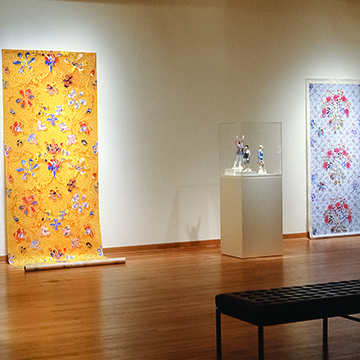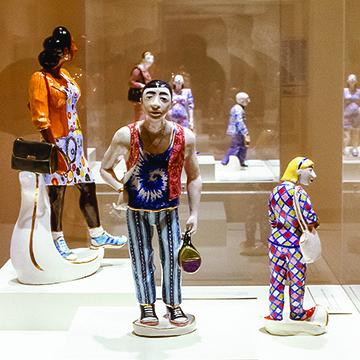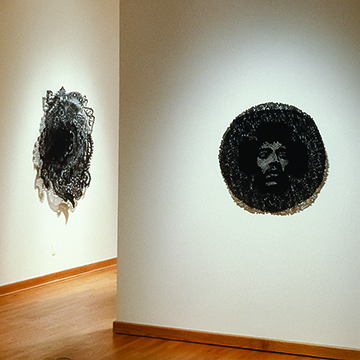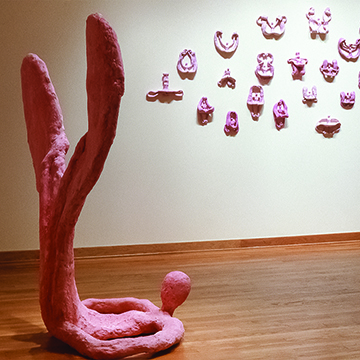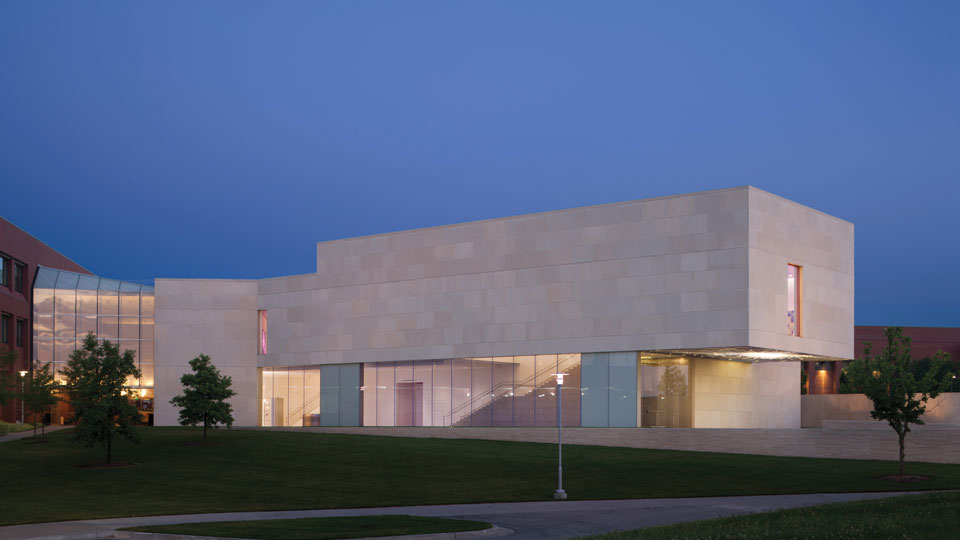Ordinary/Extraordinary
Ann Agee · Eric Obrosey · Holly Zausner
Each of these three artists manifests a desire to be mixed into whatever living is going on in your living room. More traditional objects want to be in your living room, but separate from it. Paintings hang on the wall – up, up and away from greasy hands and cat hair. Sculptures that look like sculpture enforce their zone of separation through our learned behavior – the “Do not touch” sign in our heads. Ann Agee’s figurines were meant to be placed on the banquet tables more as entertainment than art. While Aric Obrosey’s fragile and precious doilies are kept in traditional art locations, in our minds we relocate them to their traditional positions. Doilies are draped on the mantel, placed under plants, over and around. Holly Zausner’s figures wrap around chairs and hover over tables. Although you are seeing the works in a gallery space, imagine that one collector has let all three of these artists in the door, and there is one room with all these explosive transformations which, in their exuberance, license other desublimations of interdicted behavior . . .
Ann Agee was born in 1959 in Philadelphia, Pennsylvania. Agee graduated with an MFA from Yale University in 1986, and a BFA from Cooper Union School of Art in 1981. Aric Obrosey was born in 1955 in Pontiac, Michigan, and received a BFA in 1979 from the University of Michigan. Holly Zausner was born in 1951 in New Jersey, studied at Bard College, Annandale-On-Hudson, New York, and then at the New York Studio School.
The accompanying gallery guide features an essay by Bill Arning, critic and curator, New York.
Ann Agee returns with handmade wallpaper and porcelain figurines which are masterful (I never in my life ever thought I would be writing about porcelain figurines). They convey, in their poses, their gestures, in their casually impertinent and resourcefully interiorized expressions, in their mishmash of clashing clothing patterns, styles and Pop colors, a careful observation on Manhattan street life. This reportage, in three dimensions, of the complexity and contradictions of the tumultuous American urban hustle and bustle is driven home by Agee with sympathy, style and humor.— Dominique Nabras, curator and critic, New York, New York
Aric Obrosey works slowly – very slowly. He cuts, burns and otherwise paints intricate lace patterns into and onto neoprene, Mylar and other unforgiving materials. None of this would engage us one iota were it not for the idiosyncratic relationship between Obrosey’s imagery and his technical prowess. Floating through his bizarre worldview are fast-food waitresses, 70s mirrored disco balls, grandma-type dress gloves, lamb chops and steaks – the epitome of disposability. But here, the artist has imbued this lowly iconography with the permanence of pyramids.
— Bill Arning, critic and curator, New York, New York
Elongation and color, initially the two most striking elements of Holly Zausner’s recent work, immediately establish a complex relationship to the history of sculpture. The extension of a part of the body is always a psychologically charged image, symbolizing the degree to which we are unable to control our bodies, the degree to which they control us. The longer the limbs stretch out, the smaller the figure’s head becomes, as if emphasizing the mind’s helplessness and puzzlement. In looking at Zausner’s sculptures it’s probably more helpful to think of Pinocchio than of Giacometti. But her work is refreshingly unmorbid. The pathos is always balanced by humor.
— Raphael Rubinstein, senior editor, Art in America, New York

